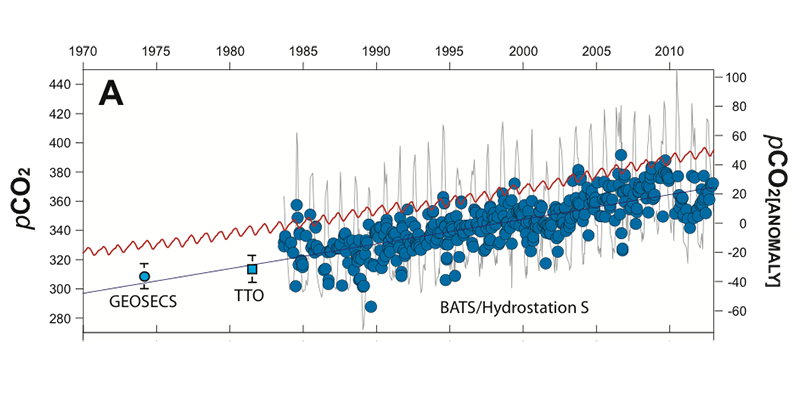|
The CTD >>
|
5.1 - Observational Challenges
Objectives:
- To understand and know the challenges facing marine scientists.
- To appreciate just how difficult and expensive it is to collect oceanographic data.
- The basics of Hydrostatic Pressure and Buoyancy
Data collection from the ocean is a challenge for many reasons. The primary one is that the samples we need are at sea and usually under water! Until recently this has meant that oceanographers have needed to go to sea on expensive research ships. Ships often cost around $1000 per hour to run, which includes down time and relocation. This all makes data very expensive and time consuming to get. Problems for ocean scientists include:
All of these factors mean that the oceans remain the most unexplored part of the planet. So why and how can we measure the important aspects of the ocean? Science depends on high quality, accurate and reliable data to enable understanding. If the data is good, then we can derive conclusions based on it. For example, the world's longest continuous oceanic time series data has come from a location to the southeast of Bermuda and is called the Bermuda Atlantic Time Series (BATS). In the old days, it was believed that the ocean was unchanging and therefore we could just create a snapshot and understand everything. Now, thanks to measurements repeated over a long period of time we know that the oceans (and atmosphere) are changing. The BATS time series shows, among other things, that the percentage of dissolved carbon dioxide is steadily increasing in conjunction with the increase in atmospheric carbon dioxide. This shows us something that people and politicians don't want to acknowledge - that the climate is slowly and remorselessly changing due our fossil fuel emissions and attacks on the world's forests.
- We cannot breathe under water.
- Water absorbs light, which makes the ocean dark and it is impossible to see deep down.
- Water absorbs radio and microwaves, which affects the usual methods of remote sensing and communication.
- The oceans are very deep and the pressure at depth is extremely high, which can crush hollow instruments or find a leak through any potential seal.
- Biofouling. Any instrument left in shallow water will quickly become fouled with algae and other marine organisms such as barnacles.
- Seawater is corrosive and will degrade metals and electrical connections.
- Seawater is conductive so making electrical connections challenging to insulate against.
- The ocean is dynamic, tides and currents constantly move the water from place to place.
- Waves mean that there cannot be a steady observation platform and any instrument on the surface could be destroyed by the motion. They can also be life threatening and make life aboard a ship dangerous and unpleasant.
All of these factors mean that the oceans remain the most unexplored part of the planet. So why and how can we measure the important aspects of the ocean? Science depends on high quality, accurate and reliable data to enable understanding. If the data is good, then we can derive conclusions based on it. For example, the world's longest continuous oceanic time series data has come from a location to the southeast of Bermuda and is called the Bermuda Atlantic Time Series (BATS). In the old days, it was believed that the ocean was unchanging and therefore we could just create a snapshot and understand everything. Now, thanks to measurements repeated over a long period of time we know that the oceans (and atmosphere) are changing. The BATS time series shows, among other things, that the percentage of dissolved carbon dioxide is steadily increasing in conjunction with the increase in atmospheric carbon dioxide. This shows us something that people and politicians don't want to acknowledge - that the climate is slowly and remorselessly changing due our fossil fuel emissions and attacks on the world's forests.
ACTIVITIES
| oc_5.1_observing_the_oceans.docx | |
| File Size: | 62 kb |
| File Type: | docx |
The CTD >>
